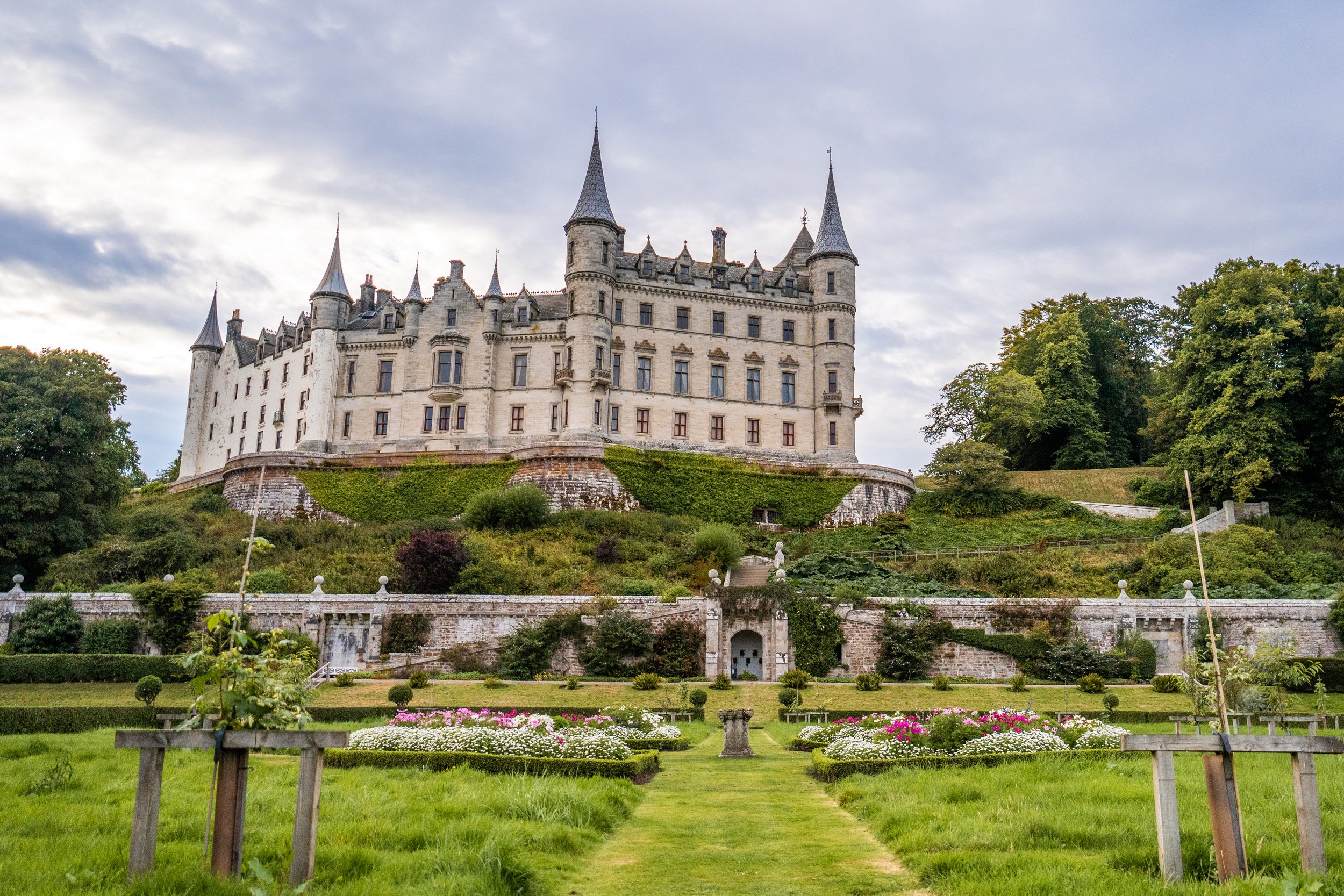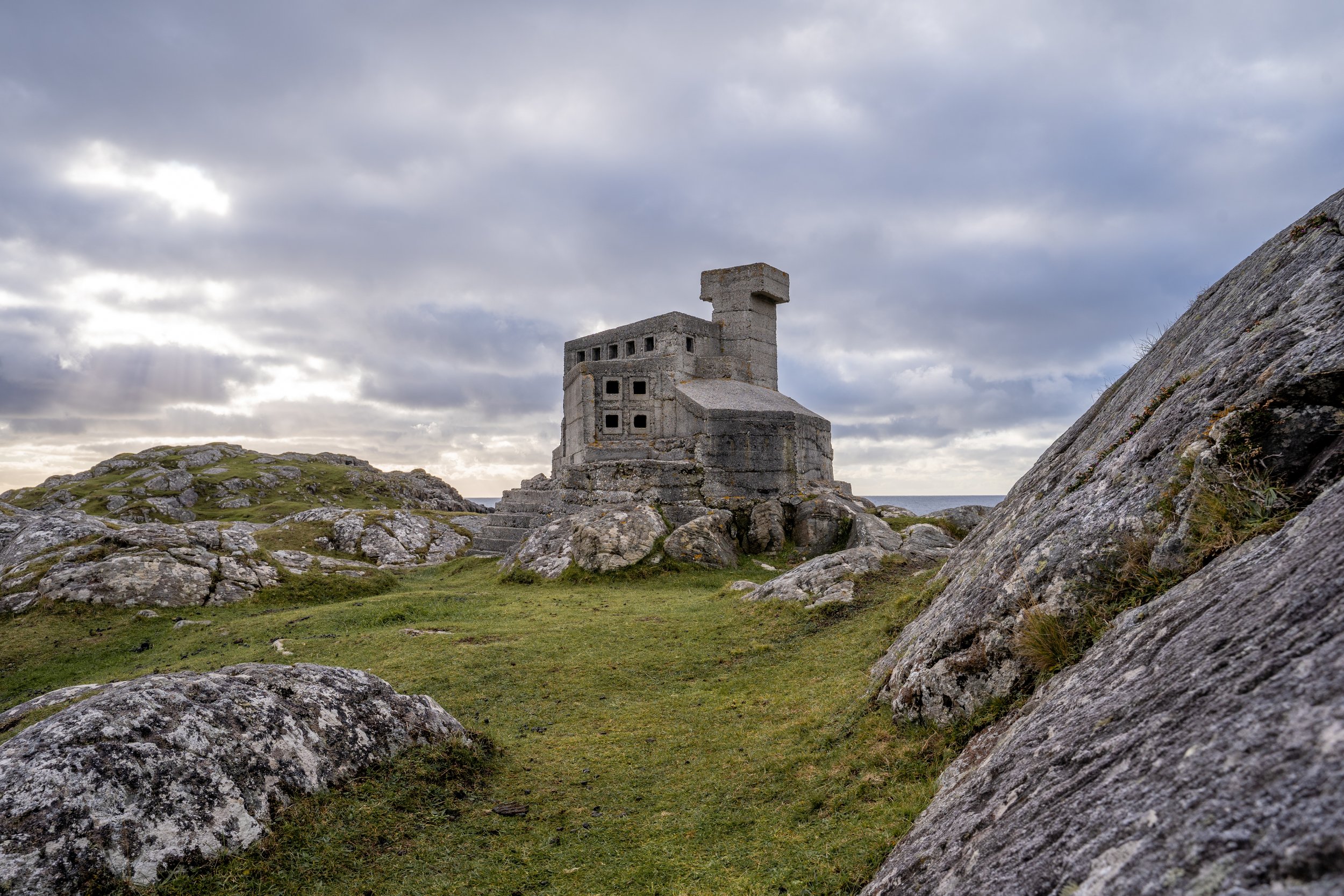5 Best Castles on the NC500
Dunrobin Castle
The North Coast 500 is the most popular road trip in Scotland and one of the many highlights of the NC500 is the history available at every twist and turn. There are many castles around the NC500, some ruins and some have been restored. In this guide we share with you the top castles to visit on the NC500.
Dunrobin Castle
One of Britain’s oldest continuously inhabited houses sits just north of the beachside town of Dornoch, Dunrobin Castle. This beautifully restored building dates back as early as the beginning of the 13th century and is believed to have had residents living within ever since.
The success of this castle can be attributed to the stature of the owning families, believed to have been the Earldom of Sutherland. As one of the seven ancient earldoms of Scotland, the Sutherlands were one of the most powerful families in Britain. As much as this sounds like it is from a fairytale, the castle has the looks to match, sitting high up from the nearby banks of the North Sea.
Dunrobin Castle
Ardvreck Castle
One castle that glistens in the sunny weather, is the ancient Castle Ardvreck. Surrounded by the still waters of Loch Assynt, the ancient ruins of Castle Ardvreck are a sure sight to behold. Thought to date back to 1490, this castle was constructed by the Clan Macleod. This was then the stronghold for Clan Macleod until 1672, when it was captured by Clan Mackenzie. It was then inhabited until 1737, when a mysterious fire destroyed it beyond repair.
As you drive along the winding A837, you will see these ruins sitting proudly above the glistening waters.
Castle Ardvreck
Castle of Mey
The reconstructed structure of the Castle of Mey sits just west of John O’Groats. The structure you see today was built between 1566 and 1572, with additional structures being added later in the 17th and 18th centuries. The name of the castle was also changed during this time to Barrogill Castle.
This castle is particularly fascinating as it has remained inhabited since its construction 450 years ago. It is now used as a visitors centre, with visitors topping 27,000 in its first year of opening in 2007. It is open between the 1st May and 30th September 7 days a week, apart from 10 days in July/August time when it is used as accommodation.
This castle has also been featured in of works of fiction, such as the novel “Spy Castle” and the Netflix show “The Crown”.
Castle of Mey
Castle Sinclair Girnigoe
The largest castle ruins on the NC500 are the cliffside wonders of Castle Sinclair Girnigoe. Perched on the side of the cliff, these castles hold a fascinating historical tale. The 15th century Castle Girnigoe and 17th century Castle Sinclair are believed to be one of the earliest seats of Clan Sinclair.
The structure was constructed between 1476 and 1606, with adaptions made to them spanning some 100 years. Throughout this time, these castles remained occupied by either Sinclair or Campbell, with ownership passing between the two. The occupation of this castle came to an end in 1680 when a siege to Castle Sinclair and Girnigoe saw it damaged so badly, that it was never inhabited again.
Located around 3 miles north of Wick, these ruins are the most spectacular ruins you will find on the road trip.
Castle Sinclair Girnigoe
Hermit’s Castle
A more unique castle on the North Coast 500 is Hermit’s Castle, located beside Achmelvich Beach. This Castle is like no other on the route as it is more like a small coastal fortress and it still isn’t completely known why it is there. The story goes that the castle was built by an English architect, David Scott who hailed from Norwich. It is said that the castle was built by him single-handedly in just 6 months.
It is also said that he maintained secrecy about the construction of Hermit’s Castle. He used to buy materials from the local fisherman and bring it to the lonely outcrop through his boat.
He was fed up with the daily life stress, and wanted to escape it by building Hermit’s Castle. However, it is said that he left soon after completing the construction.
This tiny castle is worth a look if you are in the area as it is pretty unique and known as the smallest castle in Europe.
Hermit’s Castle






